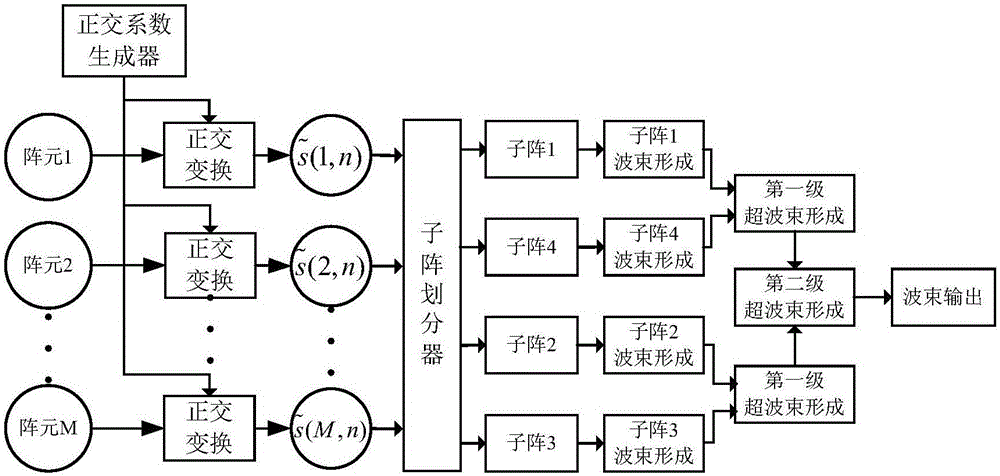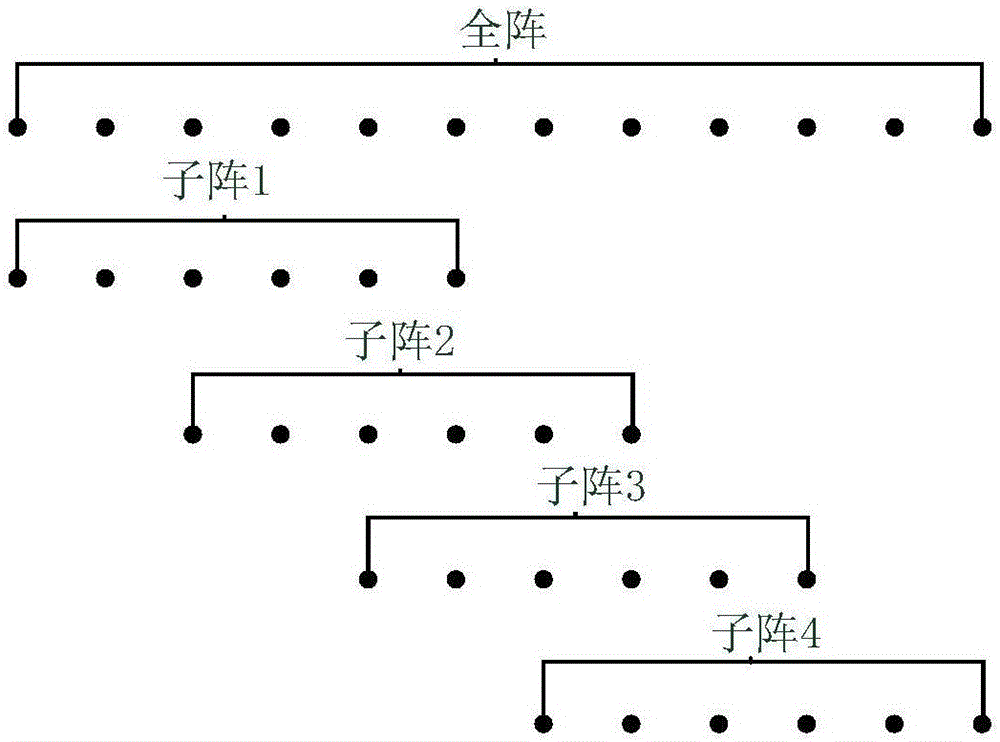Multibeam depth measuring sonar multi-subarray wave beam sharpening method
A sounding sonar and beam sharpening technology, applied in radio wave measurement systems, instruments, etc., can solve problems such as large computational load, difficult real-time implementation, and hardware complexity, and achieve high main sidelobe ratio and high engineering practicality. the effect of reducing the width of the main lobe
- Summary
- Abstract
- Description
- Claims
- Application Information
AI Technical Summary
Benefits of technology
Problems solved by technology
Method used
Image
Examples
Embodiment Construction
[0038] The present invention is described in detail below in conjunction with accompanying drawing:
[0039] A multi-beam sounding sonar multi-subarray beam sharpening method comprises the following steps:
[0040] Step (1): performing orthogonal transformation on the original signal received by the transducer array to obtain the required analytical signal;
[0041] Step (2): Utilize the subarray divider to divide the obtained analytical signal into subarrays, divide the signal into 4 subarrays with a certain overlap in space, and divide the subarrays into 2 subbeam groups;
[0042] Step (3): Perform conventional beamforming on each subarray, and perform first-level sharpening beamforming on subbeam group A composed of subarray 1 and subarray 4 and subbeam group B composed of subarray 2 and subarray 3;
[0043] Step (4): The sharpened beamformed output of sub-beam group A and sub-beam group B is used as the input of the next level of sharpened beamforming, and the second leve...
PUM
 Login to View More
Login to View More Abstract
Description
Claims
Application Information
 Login to View More
Login to View More - R&D
- Intellectual Property
- Life Sciences
- Materials
- Tech Scout
- Unparalleled Data Quality
- Higher Quality Content
- 60% Fewer Hallucinations
Browse by: Latest US Patents, China's latest patents, Technical Efficacy Thesaurus, Application Domain, Technology Topic, Popular Technical Reports.
© 2025 PatSnap. All rights reserved.Legal|Privacy policy|Modern Slavery Act Transparency Statement|Sitemap|About US| Contact US: help@patsnap.com



